Hope Pembroke Dock's HMS Erebus found in Canadian Arctic
- Published
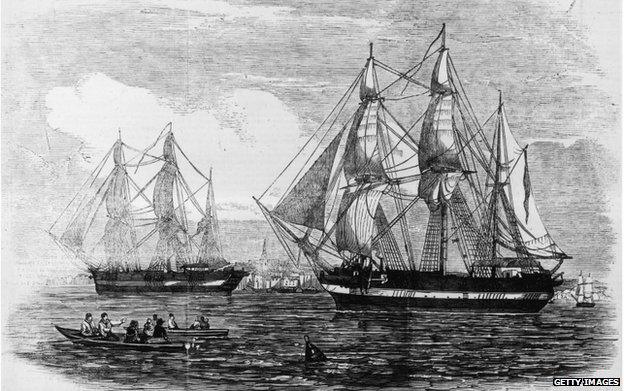
HMS Erebus and HMS Terror, as they appeared in Illustrated London News
Pembroke Dock-built HMS Erebus could be the ship discovered by Canadian scientists searching for an ill-fated 19th Century Arctic expedition.
It was one of two commanded by Sir John Franklin when he set out in 1845 to chart the Northwest Passage in the Canadian Arctic.
They became stuck in pack ice off King William Island and both crews perished as they tried to escape on sledges.
Contemporary rescue missions have found bodies and artefacts but no ships.
Now, over 30 years of searching has culminated with the sonar detection by a Canadian government team of either the Erebus, a 375-tonne wooden vessel, or the other ship on the mission, HMS Terror.
In its 112-year history, Wales' only royal shipyard at Pembroke Dock built a total of 263 vessels for the navy, including each of the royal yachts up until Britannia.
Yet John Evans, of the Pembroke Dock Heritage Centre, said that when she was launched in 1826, HMS Erebus was one of their most unremarkable.
Erebus was originally intended to be a bomber ship for firing mortar shells, a class which was already obsolete by the time she was launched.
"So after just a few years operating in the Mediterranean, she was refitted as a survey ship and deployed on voyages to both the Arctic and Antarctic," said Mr Evans.
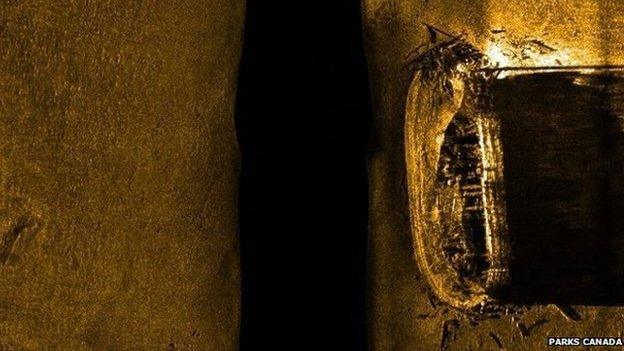
Sonar image of a ship on the northern Canadian sea bed
"She was particularly suited to this because as a bomber she'd been built very sturdily and could cope in the ice."
Mr Evans said that it is this distinctive construction which may help to identify which of the two Franklin Ships the Canadian team have unearthed in the Victoria Strait.
He explains that although both were former bomber ships, Erebus was a Hecla Class, while Terror was an older and smaller Vesuvius Class.
"I'm not sure how much detail the Canadians' sonar is able to give at the moment, but if they can get a close enough view, the two ships would look quite different," he said.
Modern interest in the fate of the Franklin expedition was reignited in 1981 when forensic examinations of the remains showed that in their final days some of the crew had resorted to cannibalism to survive.
Some made it as far as the shores of mainland Canada, but still hundreds of miles away from the nearest western outpost, it is thought all had died by the end of 1848.
The post-mortem examinations also revealed that lead poisoning from either canned food or the ship's water-storage system could have contributed to their downfall.
For the time being the Canadian government is keeping the exact location of the wreck a secret, but for Mr Evans its discovery could not have come at a better time.
"This year is the 200th anniversary of the opening of the royal dockyard at Pembroke Dock, so it's an amazing and happy coincidence that they've found something now," he said.
"Even if it turns out to be HMS Terror, the two ships would have been close together so you have to be hopeful that the other will also show up before long," he said.
"It's become one of the biggest maritime mysteries, up there with the Mary Celeste, and our volunteers are already working on a new exhibition to mark the historic event."
- Published10 September 2014
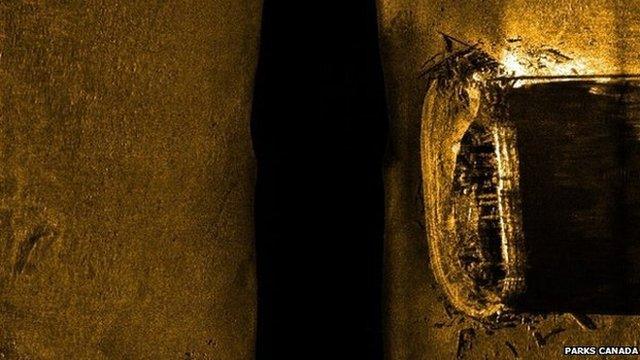
- Published9 September 2014
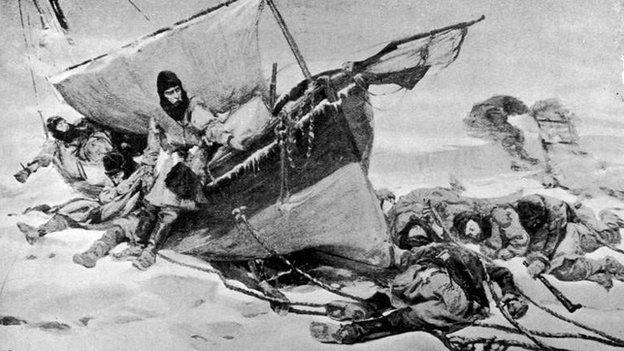
- Published9 September 2011
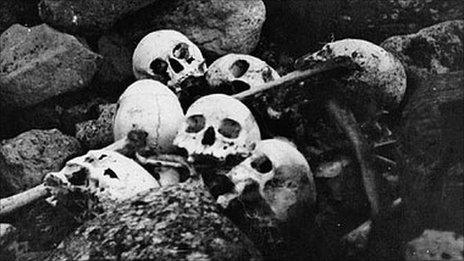
- Published31 October 2012

- Published21 July 2010